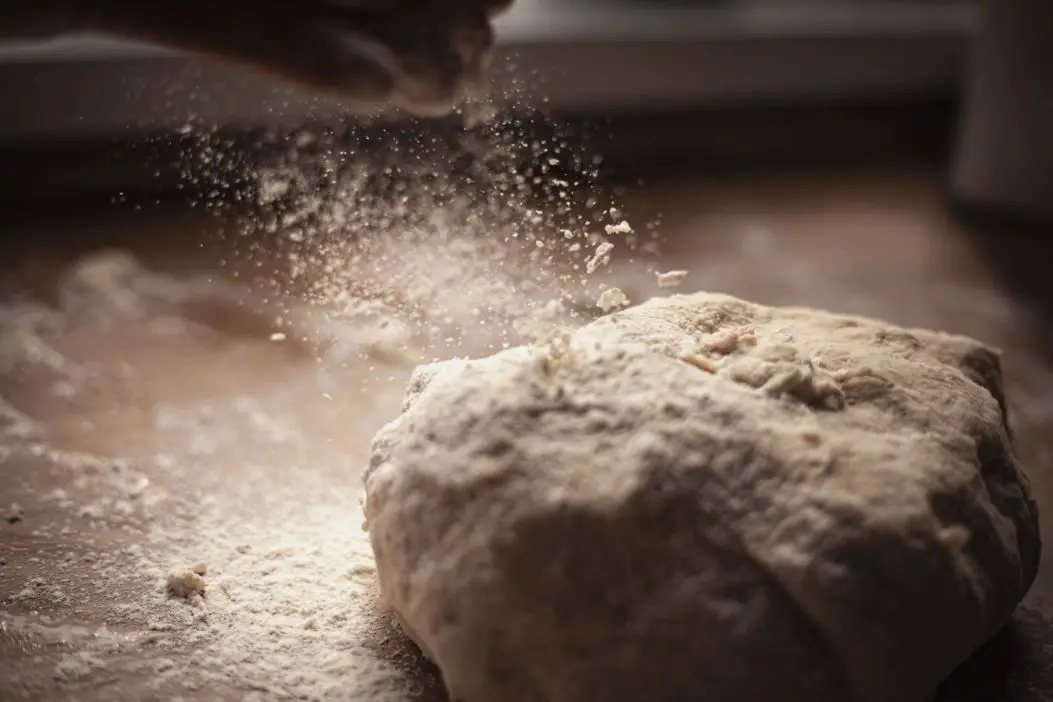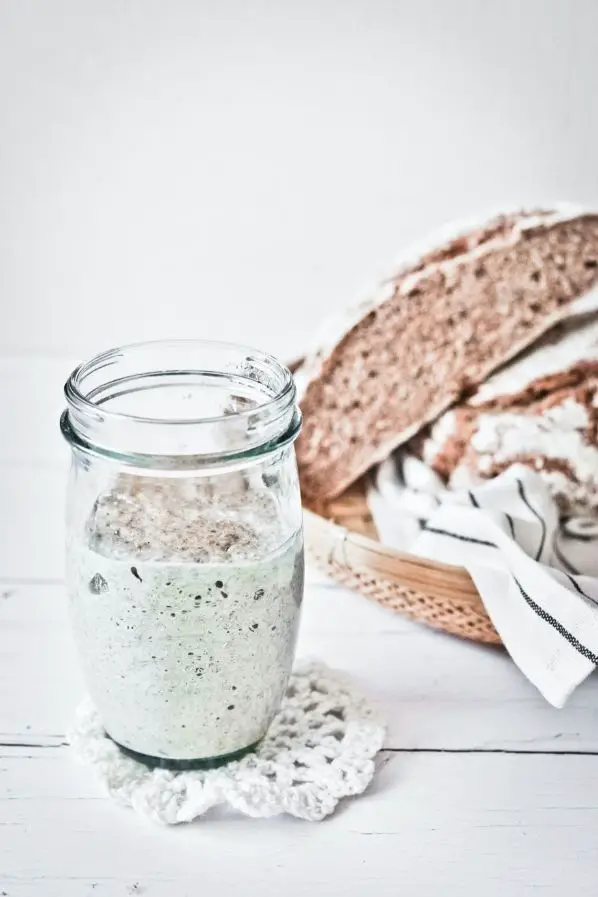Sourdough bread has gained immense popularity for its distinctive tangy flavor and rustic appeal.
However, sometimes your homemade sourdough might turn out to be too sour, overwhelming the other flavors and becoming less enjoyable.
In this article, we will explore the 8 factors that influence sourness in sourdough bread, and provide 7 valuable tips to fix sourdough that is too sour.
So, if you’ve been wondering, why is my sourdough too sour? keep reading to find out.
Why Is My Sourdough Too Sour – Revealed
There could be several reasons why your sourdough bread is turning out too sour. Here are 8 possible factors to consider:
1. Fermentation Time
The length of time you allow your sourdough to ferment directly impacts its acidity.
Longer fermentation periods provide more time for the bacteria to produce acids, resulting in a more pronounced sour taste.
The longer the dough ferments, the more acidic it becomes.
2. Starter Maturity
The maturity of your sourdough starter can affect the sourness of your bread.
A mature starter that has been allowed to develop for a considerable period or has been left unattended for an extended time between feedings can produce a stronger sour flavor.
Older starters tend to have a higher concentration of lactic acid bacteria, which contributes to sourness.
3. Temperature
The temperature at which your sourdough dough ferments plays a role in its sourness.
Higher fermentation temperatures speed up the fermentation process, allowing more acids to develop in the dough.
If your dough ferments in a warm environment, it may result in a stronger and more pronounced sour taste.
4. Flour Type
The type of flour used in your sourdough can influence its sourness. Different flours contain varying amounts of naturally occurring lactic acid bacteria.

Some flours, such as rye or whole wheat, have higher concentrations of these bacteria, which can contribute to a more pronounced sour flavor in the bread.
5. Feeding Schedule
The frequency and consistency of feeding your sourdough starter can affect the sourness of your bread.
If you feed your starter infrequently or maintain a low hydration level, it can promote the growth of acid-producing bacteria.
This can lead to a more sour taste in your bread as the acid-producing bacteria dominate the fermentation process.
6. Over-Ripeness
Allowing your sourdough starter to become over-ripened or left for too long can result in a stronger sour taste.

The acid-producing bacteria can become dominant during this time, leading to an overly sour flavor in your bread.
7. Water Quality
The quality of the water used in your sourdough can influence its fermentation process.
Water with high mineral content or low pH can contribute to a more acidic result.
The mineral composition and pH of the water can affect the activity of the bacteria and yeasts present in the dough, impacting the sourness of the bread.
8. Starter Hydration
The hydration level of your sourdough starter affects the balance between yeast and bacteria.
A higher hydration level promotes the growth of lactic acid bacteria, which can result in a more pronounced sour taste in the bread.
The ratio of flour to water in the starter can influence the sourness of the final product.
7 Tips to Fix Sourdough That Is Too Sour
If your sourdough bread has turned out too sour for your taste, here are 7 tips to help you fix it:
1. Adjust Your Sourdough Starter
The sourness of your bread largely depends on the acidity of your starter. You can try refreshing your starter a few times to reduce its acidity.

Feed it with a higher proportion of fresh flour and water and allow it to ferment at room temperature for a shorter duration. This will encourage milder fermentation.
2. Use a Shorter Fermentation Period
Fermentation time affects the flavor profile of sourdough. If your dough is fermenting for an extended period, it can develop more acidity.
Reduce the overall fermentation time by shortening the bulk fermentation and final proofing stages.
You can adjust the ambient temperature or increase the dough’s temperature slightly to speed up fermentation.
3. Add a Small Amount of Sugar
Sugar can help balance the acidity in your sourdough. Try adding a teaspoon or two of sugar to the dough during the mixing stage.

The sugar will provide food for the yeast, allowing it to produce a more balanced flavor.
4. Incorporate Other Flours
If you’re using high-protein flour like rye or whole wheat, it can contribute to the sourness.
You can try reducing the proportion of these flours and using a larger percentage of all-purpose or bread flour.
This change will help reduce the acidity in your dough.
5. Experiment With Different Hydrations
The hydration level of your dough affects fermentation.
Generally, a higher hydration level leads to a tangier flavor. If you find your sourdough bread to be too sour, you can try reducing the hydration slightly.
This adjustment may help in reducing the overall sourness of the bread without compromising its texture or quality.
6. Extend the Bulk Fermentation
If you’re willing to invest more time, you can try retarding your dough in the refrigerator during bulk fermentation.
The colder temperature slows down fermentation, resulting in a milder flavor.
Place the covered dough in the refrigerator for an extended period, such as overnight, and continue with the remaining steps the next day.
What to Do With Too Sour Sourdough Bread?
If you have sourdough bread that is too sour for your taste, there are several things you can do to salvage it or transform it into a delicious dish.
Here are 5 suggestions:
1. Toast It
Toasting the bread can help mellow out the sourness and enhance the flavors. Spread some butter or your favorite spread on the toast to add extra taste.
2. Make Croutons
Cut the sourdough bread into small cubes, toss them in olive oil, and season with herbs and spices of your choice.
Bake them in the oven until they are crispy. These croutons can be used to top salads or soups, adding a crunchy texture.
3. Prepare Bread Pudding
Transform the sourdough bread into a tasty dessert by making bread pudding.
Tear the bread into small pieces, and soak them in a mixture of eggs, milk, sugar, and your favorite flavors such as cinnamon or vanilla.
Bake the mixture until it sets and forms a pudding-like consistency.
4. Create Bread Crumbs
If the sourdough bread is too sour to enjoy on its own, you can turn it into bread crumbs.
Simply dry the bread slices in the oven or toaster until they become crispy. Once they are completely dry, process them in a food processor or crush them using a rolling pin to create breadcrumbs.
These can be used as a coating for fried foods or as a topping for baked dishes.
5. Use It for Sandwiches or Panini
Sometimes, a strong-flavored filling can help balance out the sourness of the bread.
Use your too-sour sourdough bread to make sandwiches or panini with flavorful ingredients like cured meats, strong cheeses, or tangy spreads.
The combination of flavors can help offset the sourness.
Why Is My Sourdough Too Sour – Conclusion
In conclusion, achieving the perfect level of sourness in your sourdough bread requires attention to several key factors.
The length of fermentation time, starter maturity, temperature, flour type, feeding schedule, over-ripeness, water quality, and starter hydration all contribute to the sourness of your bread.
By understanding how each of these factors influences the flavor profile, you can experiment and make adjustments to create a sourdough bread that suits your taste preferences.
So go ahead, embrace the art and science of sourdough baking, and enjoy the delightful balance of tanginess in your homemade loaves.

